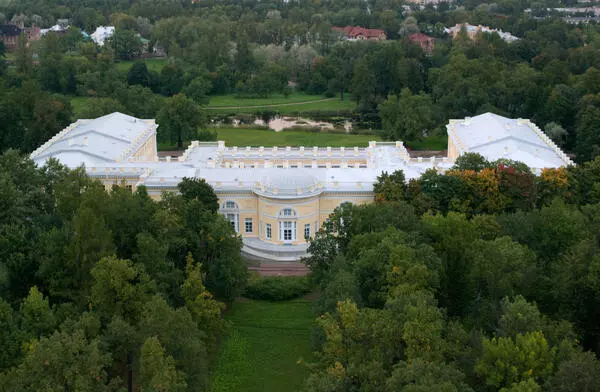The Tsarskoe Selo palace and park ensemble is a brilliant monument of world architecture and garden art of the 18th and early 20th centuries.
A whole galaxy of outstanding architects, sculptors and painters realized the plans of the royal customers here. The best examples of Baroque and classicist architecture are concentrated at Tsarskoe Selo, and it was here that the first Art Nouveau interiors appeared in St. Petersburg. The compositional center of the ensemble is the Great Palace of Tsarskoe Selo (Catherine Palace), a magnificent example of Russian Baroque. Also Tsarskoe Selo is home to one of the best creations of classicist architecture — the Alexander Palace.
For two centuries, Tsarskoe Selo was the summer residence of the emperors, which was built with the participation of government agencies and was of state significance. After the 1917 Revolution, the palace and park ensemble was turned into a museum, and the new authorities handed the best buildings of the city over to educational and recreational institutions for children. In this regard, in 1918 the city was renamed Detskoe Selo. On June 9 of the same year, the Catherine Palace was opened as a museum. In 1937, to commemorate the centenary of the tragic death of Alexander Pushkin, the city, where the future poet was brought up in the Imperial Lyceum, was named after him. Finally, in January 1983 the palaces and parks of Pushkin town were given a heritage status and in 1990 the current name, the Tsarskoe Selo State Museum and Heritage Site.
A whole galaxy of outstanding architects, sculptors and painters realized the plans of the royal customers here. The best examples of Baroque and classicist architecture are concentrated at Tsarskoe Selo, and it was here that the first Art Nouveau interiors appeared in St. Petersburg. The compositional center of the ensemble is the Great Palace of Tsarskoe Selo (Catherine Palace), a magnificent example of Russian Baroque. Also Tsarskoe Selo is home to one of the best creations of classicist architecture — the Alexander Palace.
For two centuries, Tsarskoe Selo was the summer residence of the emperors, which was built with the participation of government agencies and was of state significance. After the 1917 Revolution, the palace and park ensemble was turned into a museum, and the new authorities handed the best buildings of the city over to educational and recreational institutions for children. In this regard, in 1918 the city was renamed Detskoe Selo. On June 9 of the same year, the Catherine Palace was opened as a museum. In 1937, to commemorate the centenary of the tragic death of Alexander Pushkin, the city, where the future poet was brought up in the Imperial Lyceum, was named after him. Finally, in January 1983 the palaces and parks of Pushkin town were given a heritage status and in 1990 the current name, the Tsarskoe Selo State Museum and Heritage Site.


